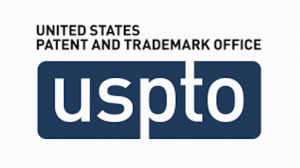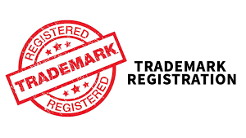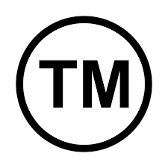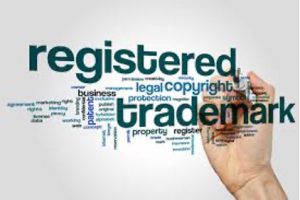 2020 has been the year of unprecedented challenges, but also resilience and transformation. Although it has been a roller-coaster ride, we have all been forced to step up to the challenges, adapt, show courage and find solutions. As we near the second year of the COVID-19 pandemic, trademark maintenance deadlines in 2021 create new obstacles for registrants. To maintain a federal trademark registration, registrants must periodically file an affidavit of use under Section 8 swearing that the mark is in use in commerce or that the registrant has an acceptable excuse for nonuse. Section 45 of the Trademark Act defines “use in commerce” as a bona fide use of a trademark in the ordinary course of trade. Another important point is that use in commerce must be lawful use. Without lawful use a party cannot establish trademark priority.
2020 has been the year of unprecedented challenges, but also resilience and transformation. Although it has been a roller-coaster ride, we have all been forced to step up to the challenges, adapt, show courage and find solutions. As we near the second year of the COVID-19 pandemic, trademark maintenance deadlines in 2021 create new obstacles for registrants. To maintain a federal trademark registration, registrants must periodically file an affidavit of use under Section 8 swearing that the mark is in use in commerce or that the registrant has an acceptable excuse for nonuse. Section 45 of the Trademark Act defines “use in commerce” as a bona fide use of a trademark in the ordinary course of trade. Another important point is that use in commerce must be lawful use. Without lawful use a party cannot establish trademark priority.
 The primary issue with these opportunistic applications—an inability to prove lawful use in commerce—presents the first roadblock to federal registration. Under the Lanham Act, registration is awarded to the first to file for and use the mark in commerce. Where a mark owner has yet to use its mark in commerce but has a bona fide intent to do so, it may file an intent-to-use application under Section 1(b), which allows an applicant to reserve a priority date. Not surprisingly, most of the applications related to COVID-19 are filed under Section 1(b).
The primary issue with these opportunistic applications—an inability to prove lawful use in commerce—presents the first roadblock to federal registration. Under the Lanham Act, registration is awarded to the first to file for and use the mark in commerce. Where a mark owner has yet to use its mark in commerce but has a bona fide intent to do so, it may file an intent-to-use application under Section 1(b), which allows an applicant to reserve a priority date. Not surprisingly, most of the applications related to COVID-19 are filed under Section 1(b).
As part of a Section 8 affidavit of use filing, the registrant must make a verified statement that the mark is being used in commerce, or that the registrant has an excusable reason for nonuse, for each class of goods or services listed. In addition, for each class of goods or services, identify the specific goods or services listed in the registration for which the mark is still in use or for which there is excusable nonuse. Registrants must also delete goods or services that are no longer in use; and for each class of goods or services remaining, include a specimen showing how the mark is used in commerce.

 The registrant may likewise be obstructed from making the typical presentation of incontestability under Section 15 following five years’ use. Registrants and their lawyers should take alert with these filings, especially when the registrant’s business action has been seriously hindered by the pandemic and related lockdowns. Neither conception of the mark, nor advertising alone is sufficient to establish use. And racing to the USPTO to exploit another’s intent to make a legitimate use of a mark does not establish a bona fide intent. A common tactic or strategy of opportunistic applicants is to resort to token uses, or minor acts or sales, for example via a website, in an attempt to establish commercial use.
The registrant may likewise be obstructed from making the typical presentation of incontestability under Section 15 following five years’ use. Registrants and their lawyers should take alert with these filings, especially when the registrant’s business action has been seriously hindered by the pandemic and related lockdowns. Neither conception of the mark, nor advertising alone is sufficient to establish use. And racing to the USPTO to exploit another’s intent to make a legitimate use of a mark does not establish a bona fide intent. A common tactic or strategy of opportunistic applicants is to resort to token uses, or minor acts or sales, for example via a website, in an attempt to establish commercial use.



 2020 has been the year of unprecedented challenges, but also resilience and transformation. Although it has been a roller-coaster ride, we have all been forced to step up to the challenges, adapt, show courage and find solutions. As we near the second year of the COVID-19 pandemic, trademark maintenance deadlines in 2021 create new obstacles for
2020 has been the year of unprecedented challenges, but also resilience and transformation. Although it has been a roller-coaster ride, we have all been forced to step up to the challenges, adapt, show courage and find solutions. As we near the second year of the COVID-19 pandemic, trademark maintenance deadlines in 2021 create new obstacles for  The primary issue with these opportunistic applications—an inability to prove lawful use in commerce—presents the first roadblock to federal registration. Under the Lanham Act, registration is awarded to the first to file for and use the mark in commerce. Where a mark owner has yet to use its mark in commerce but has a bona fide intent to do so, it may file an intent-to-use application under Section 1(b), which allows an applicant to reserve a priority date. Not surprisingly, most of the applications related to COVID-19 are filed under Section 1(b).
The primary issue with these opportunistic applications—an inability to prove lawful use in commerce—presents the first roadblock to federal registration. Under the Lanham Act, registration is awarded to the first to file for and use the mark in commerce. Where a mark owner has yet to use its mark in commerce but has a bona fide intent to do so, it may file an intent-to-use application under Section 1(b), which allows an applicant to reserve a priority date. Not surprisingly, most of the applications related to COVID-19 are filed under Section 1(b).
 The registrant may likewise be obstructed from making the typical presentation of incontestability under Section 15 following five years’ use. Registrants and their lawyers should take alert with these filings, especially when the registrant’s business action has been seriously hindered by the pandemic and related lockdowns. Neither conception of the mark, nor advertising alone is sufficient to establish use. And racing to the USPTO to exploit another’s intent to make a legitimate use of a mark does not establish a bona fide intent. A common tactic or strategy of opportunistic applicants is to resort to token uses, or minor acts or sales, for example via a website, in an attempt to establish commercial use.
The registrant may likewise be obstructed from making the typical presentation of incontestability under Section 15 following five years’ use. Registrants and their lawyers should take alert with these filings, especially when the registrant’s business action has been seriously hindered by the pandemic and related lockdowns. Neither conception of the mark, nor advertising alone is sufficient to establish use. And racing to the USPTO to exploit another’s intent to make a legitimate use of a mark does not establish a bona fide intent. A common tactic or strategy of opportunistic applicants is to resort to token uses, or minor acts or sales, for example via a website, in an attempt to establish commercial use.